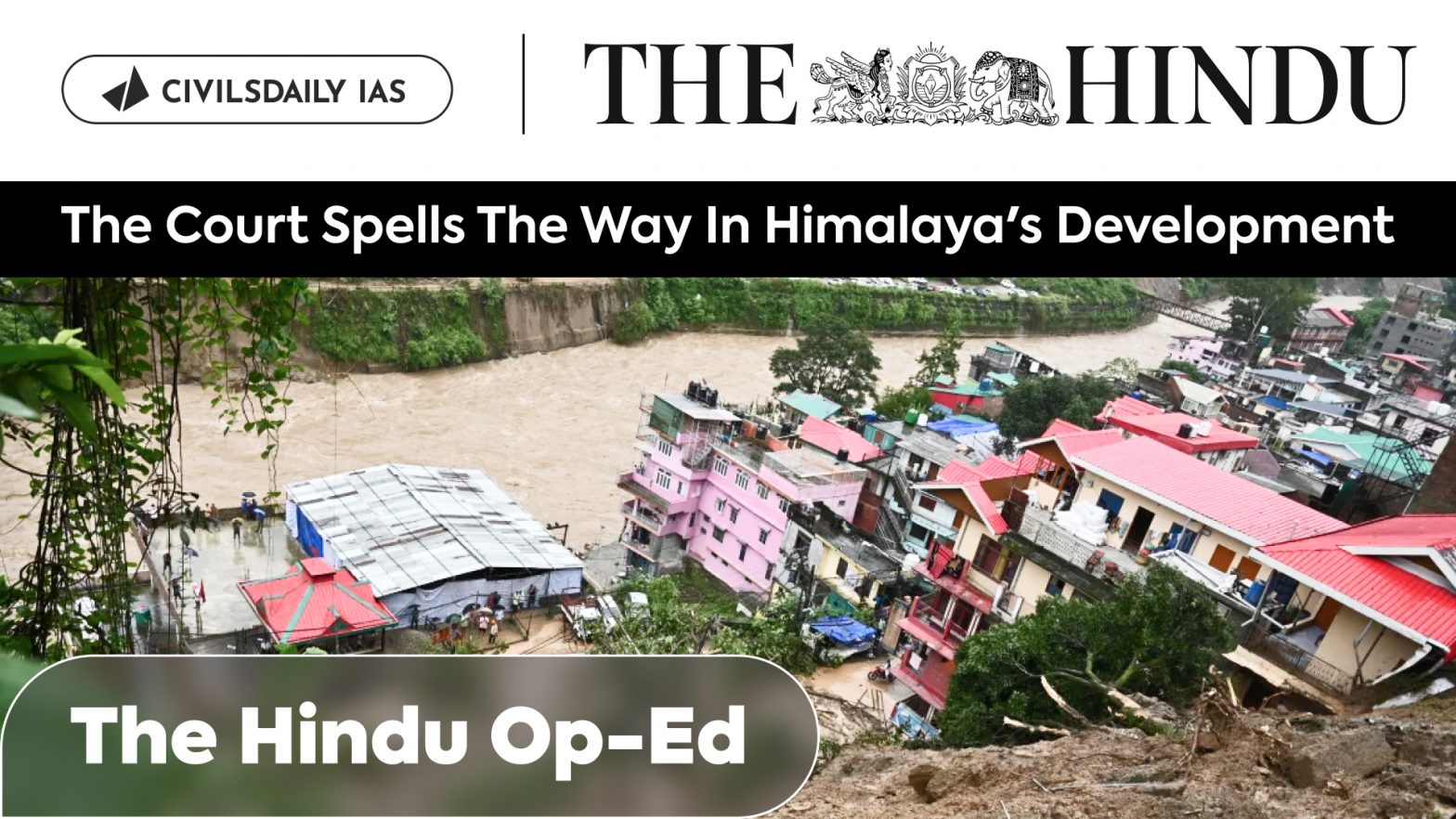| PYQ Relevance: Q Climate change is a global problem. How India will be affected by climate change? How Himalayan and coastal states of India will be affected by climate change? (UPSC IAS/2017) Q Should the pursuit of carbon credits and clean development mechanisms set up under UNFCCC be maintained even though there has been a massive slide in the value of a carbon credit? Discuss with respect to India’s energy needs for economic growth.(UPSC IAS/2014) |
Mentor comment: The Indian Himalayan Region is crucial for its rich biodiversity, serving as a habitat for diverse flora and fauna, including endangered species. It plays a vital role in regulating regional and global climate patterns, hosting the source of major rivers essential for water supply and agriculture. Culturally and spiritually significant, it supports the livelihoods of indigenous communities, offering opportunities for tourism, research, and sustainable development.
Let’s learn!
Why in the News?
The dissonance between the special development needs and the development model being pursued in the Indian Himalayan Region.
Supreme Court’s Stance on Sustainable Development
- Rights-Based Regime: Recent Supreme Court judgments indicate a move towards recognising sustainable development as a fundamental right.
- Case Highlight: In the State of Telangana and Others vs. Mohd. Abdul Qasim (2024), the Court emphasised the need for an ecocentric view of the environment.
- Trusteeship of Earth: The Court stated that humanity must act as trustees of the Earth, respecting the rights of natural entities like rivers, lakes, and mountains.
A model of destruction
- Hydroelectric Power Stations: Rampant construction of hydroelectric power stations without consideration for the rights of rivers and streams.
- Road Widening: Reckless widening of hill roads to four lanes, leading to frequent damage during river floods.
- Construction Violations: Rampant construction violates norms and regulations, including building on river beds, flood plains, steep slopes, seismic zones, and landslide-prone areas.
- Environmental Disasters: Instances like the Teesta dam breach in Sikkim and monsoon floods and landslides in Himachal Pradesh in 2023 highlight the destructive impact of the development model on the environment, ecology, and local communities.
Need for a Balanced Development Approach
- Ecocentric and Anthropocentric Views: Both approaches require aligning growth aspirations with environmental science and the rights of people and nature.
- Supreme Court’s Guidance: The Court’s judgments stress the intersectionality of environmental protection and human rights.
Carrying Capacity and Developmental Rights: Judicial Precedence
- Carrying Capacity Studies: In Ashok Kumar Raghav vs Union of India (2023), the Supreme Court sought a way forward to manage the carrying capacity of Himalayan states.
- Right to a Clean Environment: In the Great Indian Bustard case, the Court linked the right to life and equality with the right to be free from adverse climate impacts.
Significance of Infrastructure and Climate Resilience
- Sustainable Infrastructure: Development must be resilient to climate change impacts to ensure equality and access to opportunities.
- Impact on Social Inequality: Disasters amplify social inequality, disproportionately affecting the poor.
- Judicial Mandate: The Supreme Court’s judgments call for integrating disaster management in development planning.
Fundamental Right to Sustainable Development
- New Fundamental Right: The right to be free from adverse climate impacts is now recognized as a fundamental right.
- Implications for IHR: People in the IHR have a fundamental right to a development model that is sustainable and respects the region’s carrying capacity.
- Need for Legal Framework: The Supreme Court’s judgments should guide the creation of a legal framework to ensure sustainable development in the IHR.
Way Forward
- Integrated Approach Needed: Development planning must incorporate disaster prevention and resilience measures.
- Convergence of Authorities: The planning stage convergence of different authorities is essential to ensure that all disaster and climate resilience concerns are addressed before project implementation.
- Role of Science and Policy: Science, policy, and action must align in an integrated approach involving policymakers, planners, scientists, and communities.
- Call for Action: The Supreme Court’s judgments provide a basis for necessary course corrections in development practices, especially in the IHR.
- Balancing Development and Resilience: Achieving a balance between development and disaster resilience is crucial for sustainable progress.

